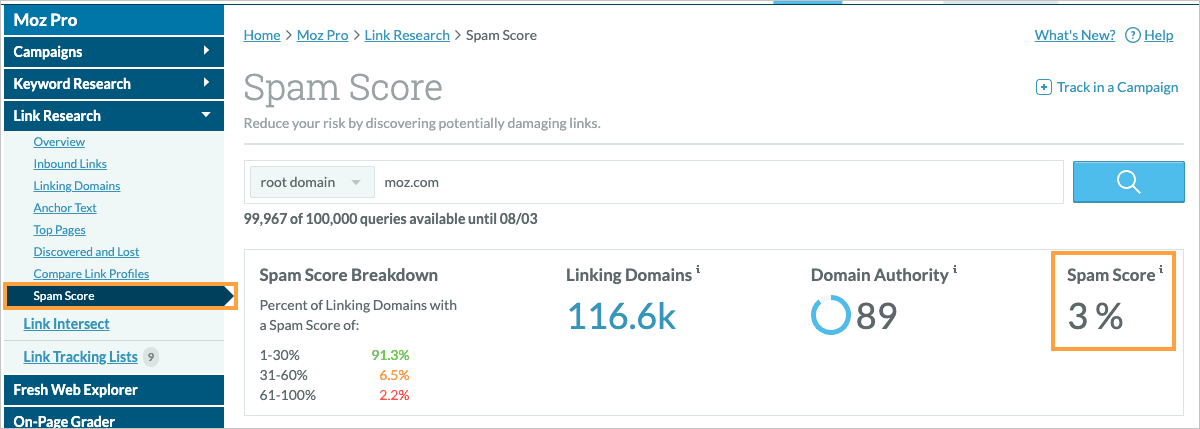When one website links to another website, it creates a backlink. It is a sign to search engines that a website is reliable and has quality content which the users vouch for. As Moz cites, a backlink is a “vote of confidence” assuring the search engines that a particular website is worth linking to and ranking on SERP. The number of backlinks to a website from trustworthy sources positively impacts the site’s rankings on SERP.

(Source: Created on Canva)
A backlink is an all-important feature of the off-page SEO. Link building is the process of bagging links from other websites to your website. As simple as it may sound, link building is not all plain sailing.
In fact, link building is a long process involving the building of relationships, listing the site in trusted directories, backlink analysis, and so on. Yet, not all backlinks are good for your page rankings.
Backlinks from high-authority websites are good for your site’s SEO, whereas those from low-authority, unsolicited websites may potentially hurt it. Also, you need to keep an eye on the external links on your page ー the page authority, content, meta-tags, follow or nofollow links, etc., as they make impressions on your content value.
In this article, we’ll describe in detail how to avoid, or find and remove toxic backlinks.
What Are Toxic Backlinks?
Toxic backlinks are essentially the links from sites that can curtail your website’s SEO. Low-authority, spammy sites, and backlinks from link-networks are the most common root causes of toxic backlinks.
According to Google, links pointing to your site can affect Google’s perception of the page or site. You should consider removing bad links built by your search engine optimizer through link schemes. Backlinks intended to exploit other site’s ranking are a clear violation of Google’s Webmaster guidelines.
First, try to remove any unnatural links to your site. If, and only if you are struggling to remove those links, disavow them to your website. Google will go on to caution the site owners to remove all such low-quality links on other pages or to renounce those links which violate their quality regulations.
Taking into account the impact bad links can have on your SEO efforts, link building cannot be taken lightly.. If you wish to step up your link building game, you can contemplate a link building reseller. While they do all the backbreaking work, you can focus on your clients.
How Toxic Backlinks Impact Seo?

(Source: pexels.com)
Google launched its Penguin update in April 2012 to punish sites spamming the Google search engine. In particular, any website buying links or earning them through link schemes and networks; the motive is to foster their search rankings.
If Penguin spots a page with bad links, it scalps the page either using AI or human resources. If this happens and Google penalizes your site, the consequences will include the following:
- content not accessible to users
lowered search ranking,
Google may remove the site from the search index
However, if you feel that your website has been falsely apprehended for spammy content, you can use Google’s Webmaster forum for reconsideration of the penalty.
Tips To Avoid Bad Links
- Avoid links from non-reliable low-authority sources
Backlink your webpage/website only from trusted domains. The more the number of backlinks from trusted domains, the higher the domain score, and trustworthiness of your site.
- Avoid links from mirrored pages
When related pages from various sites link to your content using the same anchor text, it indicates to the search engine that you are using link-building schemes. Further, they may penalize you for this.
- Check your page layout
Look into the visible text to HTML ratio and make sure it lies between 25 and 70 percent. Anything less than that, search algorithms view it as a poor quality page and this hurts the search rankings.
How To Find And Fix Toxic Backlinks
Website owners and SEO experts do not leave any stone unturned to make sure their sites rank high on Google and other SERPs.
However, stiff competition can end fair play as competitors launch negative SEO attacks on top-ranked sites. Negative SEO attacks may take many forms such as:
- Building spammy links to your domain
- Website hacking
- Removing high-quality backlinks from your domain
Among these, building bad links to competitors’ sites has been the most commonly practiced unfair strategy to downgrade a competitor’s SEO.
As per a 2018 survey by Search Engine Roundtable, 66% of SEO practices never hurt a website using spammy links. Out of the 34% who did, 59% said they were able to successfully downgrade a website with bad links. In contrast, the remaining 41% were unsuccessful in their attempts.

(Source: https://www.seroundtable.com/google-spam-negative-seo-25759.html)
Manual penalties show up in the Google Search Console > Security and Manual actions > Manual actions. If there are penalties imposed, the screen will display “No issues detected.” For algorithmic imposed penalties, all you can do is to improve your site’s overall performance.
So, it becomes quite essential for you to tidy up your link profile and get rid of those bad links. Consider the following steps to remove the toxic backlinks from your website.
Identify the links to avoid
Any link which is irrelevant to your website is a bad link, except for those from high-authority publications and editorials. Avoid links from penalized domains, mirrored pages (discussed earlier in the article), link directories, and bad neighborhoods (porn, online gambling, drugs, casinos) under any circumstances.
Identify the sources of toxic links
You can make use of tools like Ahrefs, Monitor Backlinks, Moz, and SEMRush to analyze the links to your site. Any link matching their ‘toxic’ links definition is likely to get flagged.
These tools use different trust metrics to highlight the bad links. For example, the Moz spam score predicts the likelihood of a website getting banned or penalized based on certain site features. Majestic trust flow indicates the trustworthiness of a page based on the quality of links to it.

(Source: https://moz.com/help/link-explorer/link-building/spam-score)
Monitor Backlinks shows all the data from Moz score to Ahrefs’ Domain Authority, both of which together determine whether a site is spammy or not. Once you identify the links, download the CSV file to sort, merge, filter, and model the data. This will help you contact the site owners on a priority basis to remove the links pointing to your site.
Approach websites for link removal
This is an important action Google expects you to complete before you direct it to not follow the link. Although the chances of offending webmasters removing the toxic backlinks are close to nil, you still have to approach them and request for link removal. You may take the help of the tools available to find the contact information of the spammer, but it doesn’t guarantee you a favorable outcome.
Check out Whois Domain Lookup! It offers an excellent feature where you can search for domain contacts and IP addresses. But, there are little to fewer chances that this tool would display contact information of such spammy sites. If the spammers are non-responsive to your email, contact the company hosting that domain using Whois Hosting This.
Use Google’s disavow tool
Generally, Google can confirm which links are trustworthy and can make out between good and bad links; thus, making the webmasters’ work easy.
However, Google states that you should disavow backlinks under a few conditions. First, the links pointing to your website are either spammy, artificial or low-quality links. Second, if the links have caused or might cause a manual action to your website.
Thereafter, you need to list the links to disavow in your site’s links report. Next, download the data using the export button from the links report. Don’t forget to cross-check the file to remove the URLs not to disavow.
Finally, upload the list of URLs to disavow in the Google disavow links tool page. Ding! Google will recrawl and reprocess the pages reported.
Wrapping Up!
Backlinks are important to your site’s rankings and when dealt with properly, they can bring you rewards in unexpected ways. Every issue has a flipside, and there are a few drawbacks to backlinks as well if not used correctly.
If you detect spammy backlinks to your website, don’t wait, but take action right away. Follow the steps mentioned in this article and prevent your website from getting penalized by search engines.







